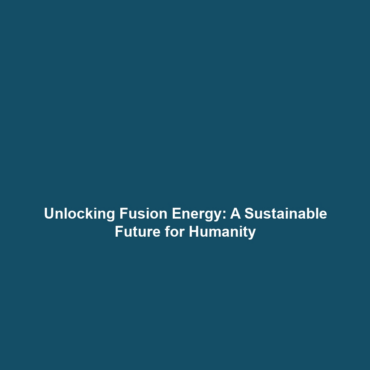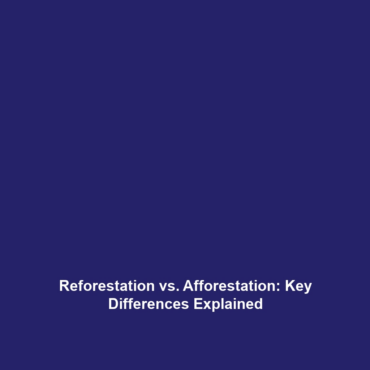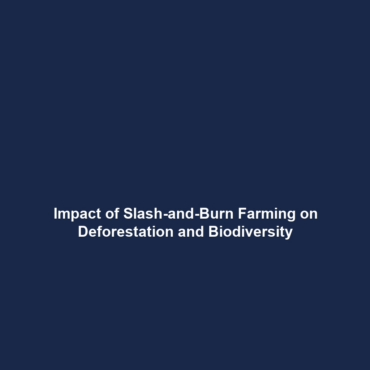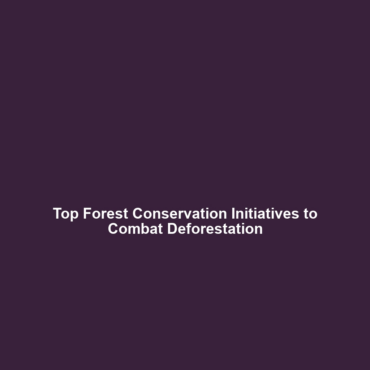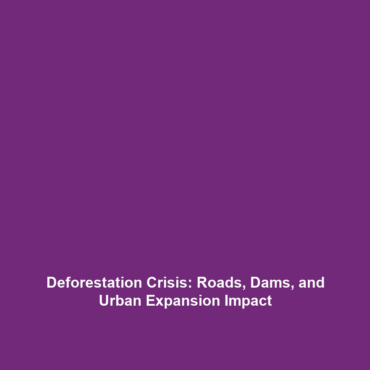Long-term Sustainability: Harnessing an Inexhaustible Energy Source through Fusion
Introduction
The concept of long-term sustainability in energy production is paramount to securing a viable future for humanity. With the advancement of fusion energy, we stand at the brink of harnessing an energy source that promises to be nearly inexhaustible, ensuring that we can meet our energy demands without depleting Earth’s natural resources. As global energy needs escalate, understanding the significance and potential of fusion energy becomes increasingly essential for addressing ecological and economic challenges.
Key Concepts
Several key concepts underpin the notion of long-term sustainability in the context of fusion energy.
- Nuclear Fusion: The process of combining lighter atomic nuclei to form heavier nuclei, releasing vast amounts of energy.
- Fuel Sources: Fusion typically uses isotopes like deuterium and tritium, which are abundant and can be sourced from water and lithium.
- Environmental Impact: Unlike fossil fuels, fusion energy produces minimal waste and no greenhouse gas emissions, contributing to global sustainability goals.
- Sustainability Metrics: The capability of fusion energy to provide continuous, stable energy output while minimizing resource depletion.
Applications and Real-World Uses
The implications of long-term sustainability through fusion extend across various sectors. Notable applications of fusion energy include:
- Power Generation: Large-scale power plants that could provide energy to cities and industries with minimal environmental impact.
- Space Exploration: Fusion propulsion systems may enable missions to distant planets or even interstellar travel.
- Desalination: Utilizing fusion energy in processes to convert seawater into drinkable water, addressing global water scarcity.
Current Challenges
Although the promise of long-term sustainability through fusion energy is substantial, several challenges of fusion energy persist, including:
- Technological Hurdles: Achieving and maintaining the necessary conditions for fusion reactions to occur reliably.
- Economic Viability: The initial investment in research, technology development, and infrastructure is substantial.
- Public Perception: Overcoming skepticism and fear regarding nuclear technologies.
Future Research and Innovations
The future of long-term sustainability via fusion energy looks promising, with ongoing research focused on innovative approaches such as:
- Magnetic Confinement: Research into improved magnetic confinement systems like tokamaks and stellarators, enhancing efficiency and reaction stability.
- Inertial Confinement: Developing methods to compress fuel pellets rapidly using lasers or other high-energy processes.
- Advanced Materials: Creating new materials that can withstand the extreme conditions inside fusion reactors, extending their operational lifespan.
Conclusion
The path to long-term sustainability through fusion energy represents a critical evolution in our energy landscape. By leveraging an inexhaustible energy source, we can strive towards a future where ecological balance and energy security coexist. Continued investment in research and technology is vital, and fostering public understanding and support can accelerate the transition to fusion energy solutions. For those interested in learning more, further reading on the latest fusion technologies can be found here.
